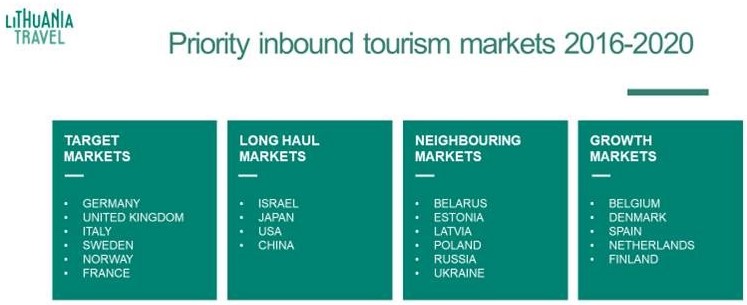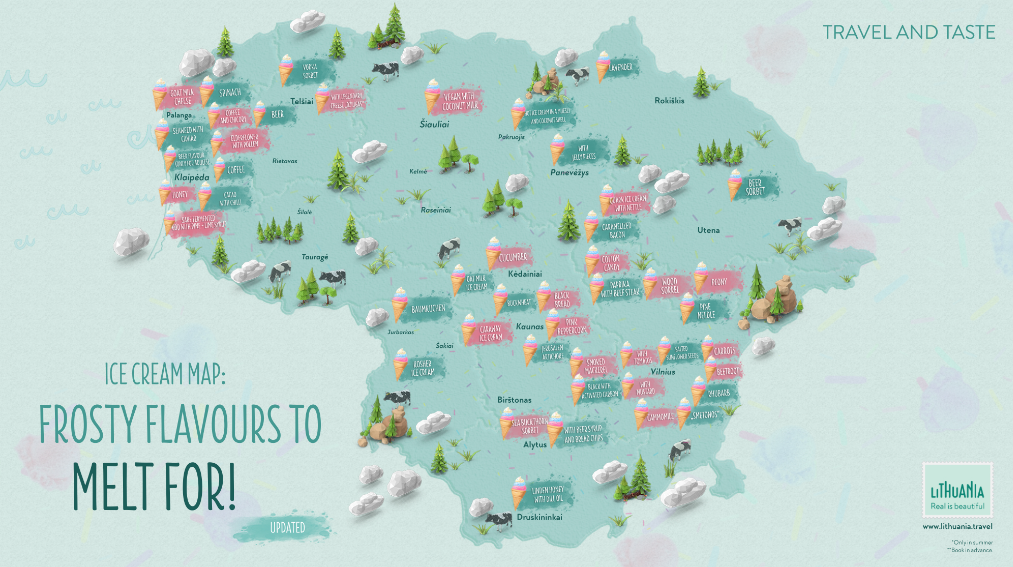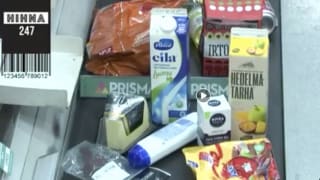The secret to Lithuania’s domestic tourism success
One of many unexpected aspects of 2020 has been the urgency of creating a solid foundation of domestic tourism. We reached out to Olga Gončarova, Head of the Domestic & Inbound Tourism Department at Lithuania Travel, to understand how they’ve pivoted their strategy to suit the pandemic-era.
The summer tourism season has been a turbulent one - how did you adapt your strategy for a pandemic world? Have your core markets shifted?
I think it’s fair to say that the summer tourism season was different from that we were used to. Lithuania - as almost every other European country - has the biggest flows of tourists from abroad in summertime. The only difference is that according to tourism statistics, we have an equal share of domestic and inbound tourism. That means that half of all tourists are from Lithuania and another half arrive from foreign countries.
Since 2016, we have been working with 21 priority markets. These markets were divided into 4 groups:

COVID-19 has required us to monitor the situation in our priority markets closely and adapt accordingly. The ‘travel bubble’ announced between the three Baltic states on May 15 was the first step in lifting lockdown for us, but we’ve shifted our marketing to target other key markets when they released their own lockdowns and we’re continuing in that manner.
Nobody knows when sales will recover but it is almost certain that it will not happen before 2021. Despite that, we are still working with priority markets - organizing online webinars, contacting biggest tour operators who were working with Lithuania before the pandemic, reminding them about Lithuania, new products on the market, helping them to create new packages, giving them ideas for the future. It is very important to communicate and collaborate in these very hard times as the competition is expected to be huge when situation will come back to normal. We’re working on retaining our share of voice now, so that it will be easier to recover later.
Many nations have increased their focus on domestic tourism to help plug the gap from international tourism. How did you achieve this in Lithuania?
Actually, the situation in Lithuania did not change dramatically. About six years ago, Lithuania changed its domestic tourism strategy and from 2014-2015 we began working intensively to promote Lithuania for local travelers. Step by step, people started to search for Lithuanian travel treasures and domestic travelling became a trend, a habit, even a fashionable way of leisure time. To spend the weekend at the newest tourism location became an attractive proposition, so more and more people started travelling around Lithuania with friends, families, or even by themselves. According to Domestic Tourism Research, 68 percent of Lithuanians spend their longest vacation in Lithuania.
During the lockdown we changed the communication style on social media and encouraged people to ‘experience’ Lithuania staying at home – we strengthened the gamification function in our website, invited people to play puzzles, quizzes, and more, all dedicated to travelling in Lithuania and sharing information on interesting locations to visit. After the lockdown ended, we focused on creating unique thematic content covering all Lithuanian regions. It also included development of gastronomical tourism.
As COVID-19 has transformed our plans, we decided to create something creative and extraordinary including a map of unusual ice cream around Lithuania and a map of untraditional traditional Lithuanian beetroot soup.

These thematic maps raised not only the interest of domestic tourists, but also foreigners – Reuters made a special report covering the story about Cold Beet Root Soup Map and Deutsche Welle covered a story about the Ice Cream Map. We are hoping that stories like these will keep Lithuania in travellers’ minds making them consider Lithuania as an attractive and interesting destination to travel to after the pandemic is over.
We saw that Vilnius launched a summer programme to bring a flavour of different countries to the nation’s capital so that citizens could explore the world without ever leaving Lithuania. Can you tell us more about this?
This summer is truly special to Vilnius. Tourists can travel around the world on the weekends without even leaving the city. Tour and event planners, restaurants, hotels, artists, and the broader community in Vilnius have united to create an exotic experience for Lithuanians who cannot travel abroad this summer. The unique project is also expected to support businesses that are at risk of losing international tourist traffic this upcoming holiday season.
Starting with June 5, Vilnius is transforming into a different country and taking visitors on an adventure around the globe every second weekend. The initiative has turned the city into seven different popular countries: Italy, India, the USA, France, Spain, Germany, and Japan. Travellers are able to experience the atmosphere of these vacation destinations while saving thousands of kilometres and hours of long flights. After all, it only takes a couple of hours at most to reach Vilnius from any corner of Lithuania.
This means more time for fun and adventurous escapes, even without needing to take the day off work. Participating businesses are preparing special experiences to help transform Vilnius into foreign destinations. Travellers are also able to take advantage of exclusive deals at hotels and restaurants, and tour organisers offer discounts on these festive weekends.
It's been a fantastic initiative – there have been a number of special offers across transport, accommodation, and restaurants to encourage people to participate, and we’ve been thrilled to have had such great engagement from our citizens.
One of the challenges, of course, is that destinations are suddenly competing for the same local market. How did you ensure your destination stood out from the crowd when you opened the Baltic travel bubble?
I’ve already spoken about a few of the ways that we’ve worked to maintain our share of voice, but we also strengthened communication on our official website and social networks in Latvian, English, and German. We’ve created relevant new tourism products as well, such as camping routes, bike routes, and more. We also launched special campaign “Discover Colours You Never Knew Existed” where each colour used in a campaign represented a Lithuanian tourism attraction.
And of course, we also invited everyone to create long-distance relationship with Lithuania during the lockdown in our official Facebook profile “Lithuania. Real is beautiful”. Like many countries, we continued the campaign for a few months and kept a “dream now, visit later” policy.
Having survived the summer, what’s next? Do you have plans for how you will continue to adapt your tourism strategy post-COVID-19?
Looking further there are still too many uncertainties! Nobody knows what autumn/winter season will bring and how everything will change in 2021. We are still monitoring all our target markets and markets that are still opened. We implement campaigns to inspire people to travel and keep on dreaming for the future journeys. We have turned flexibility and creativity into our core values and are working to promote Lithuanian tourism for the future. At the end of this year, the Lithuanian long-term strategy will come to an end, so we are now working on a new one for the next 3-5 years.
There’s a lot to prepare!
Thank you for sharing that with us, Olga, and good luck launching your new long-term strategic plan!
Related reading:
Hall of fame: 15 of the best place marketing and place branding campaigns
Has the pandemic killed soft power?
The politics of space, culture, and placemaking in post-COVID place branding









